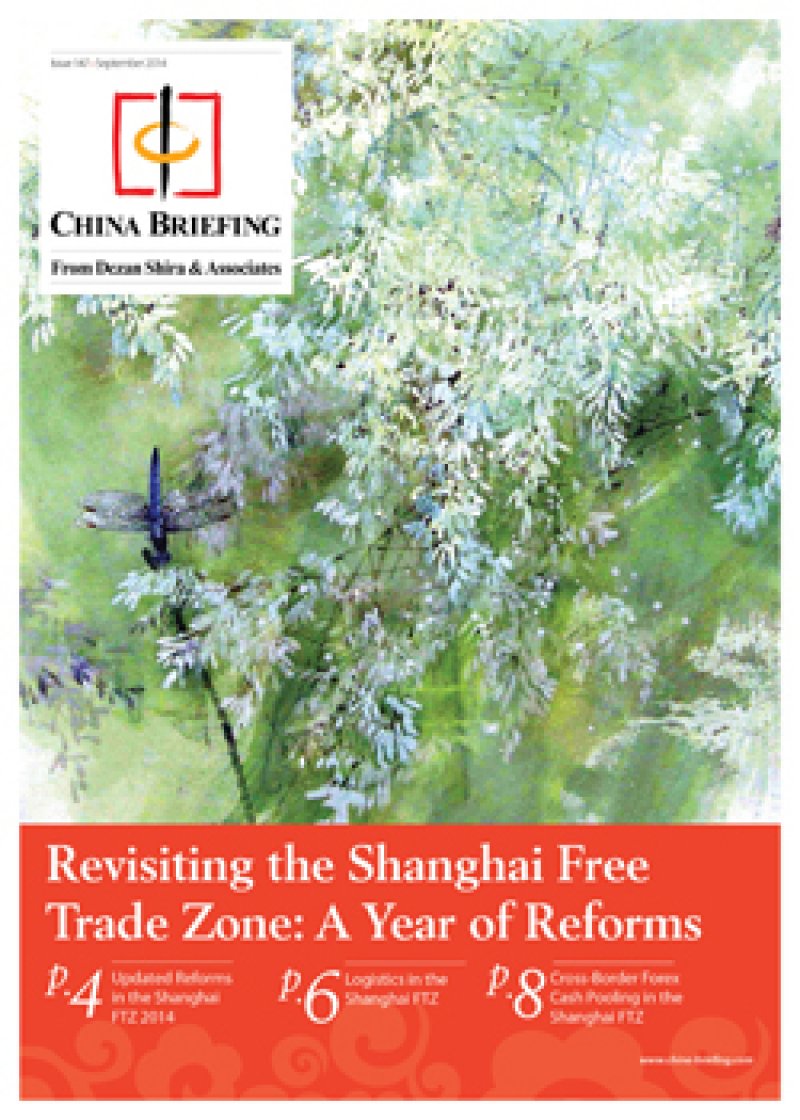
Revisiting the Shanghai Free Trade Zone: A Year of Reforms
Published: September 2014In this issue of China Briefing, we revisit the Shanghai FTZ and its preferential environment for foreign investment almost a full year after its launch. In the first three articles, we highlight the many changes that have been introduced in the Zone’s first year of operations, including the 2014 Revised Negative List, as well as new measures relating to alternative dispute resolution, cash pooling, and logistics. Lastly, we include a case study of a foreign company successfully utilizing the Shanghai FTZ to access the Outbound Tourism Industry.
No. of Pages: 12 pages
In this issue:
- Updated Reforms in the Shanghai FTZ 2014
- Logistics in the Shanghai FTZ
- Cross-Border Forex Cash Pooling in the Shanghai FTZ
- Case Study: Using the FTZ to Access the Outbound Tourism Industry
These are times of great change in China, with new opportunities and challenges confronting foreign investors. As the country moves from an export-driven economy toward increased domestic consumption, many foreign-invested manufacturers have transferred their operations to elsewhere in Asia. This is putting pressure on the Chinese government to offer new incentives for FDI and thereby sustain economic growth.
As one such measure, the Shanghai FTZ’s unique package of preferential policies is creating fresh opportunities for mature businesses in China, and opening new avenues into industries that have heretofore been restricted to foreign investment.
Whether you’re a multinational company looking to better integrate the RMB into your global cashflow, a mid-sized international trader for whom every delay cuts into your margins, or an entrepreneur whose niche industry has recently been opened to foreign investment, the FTZ offers solutions to some of the most common frustrations of doing business in China.
In this issue of China Briefing, we revisit the Shanghai FTZ and its preferential environment for foreign investment. In the first three articles, we highlight the many changes that have been introduced in the Zone’s first year of operations, including the 2014 Revised Negative List, as well as new measures relating to alternative dispute resolution, cash pooling, and logistics. Lastly, we include a case study of a foreign company successfully utilizing the Shanghai FTZ to access the Outbound Tourism Industry.

